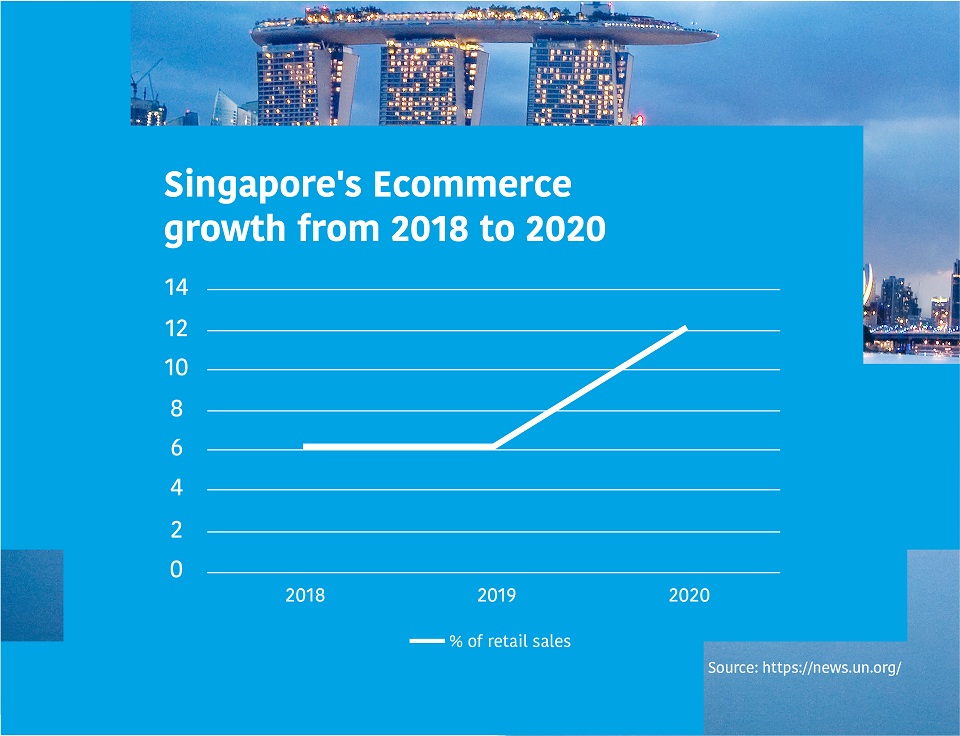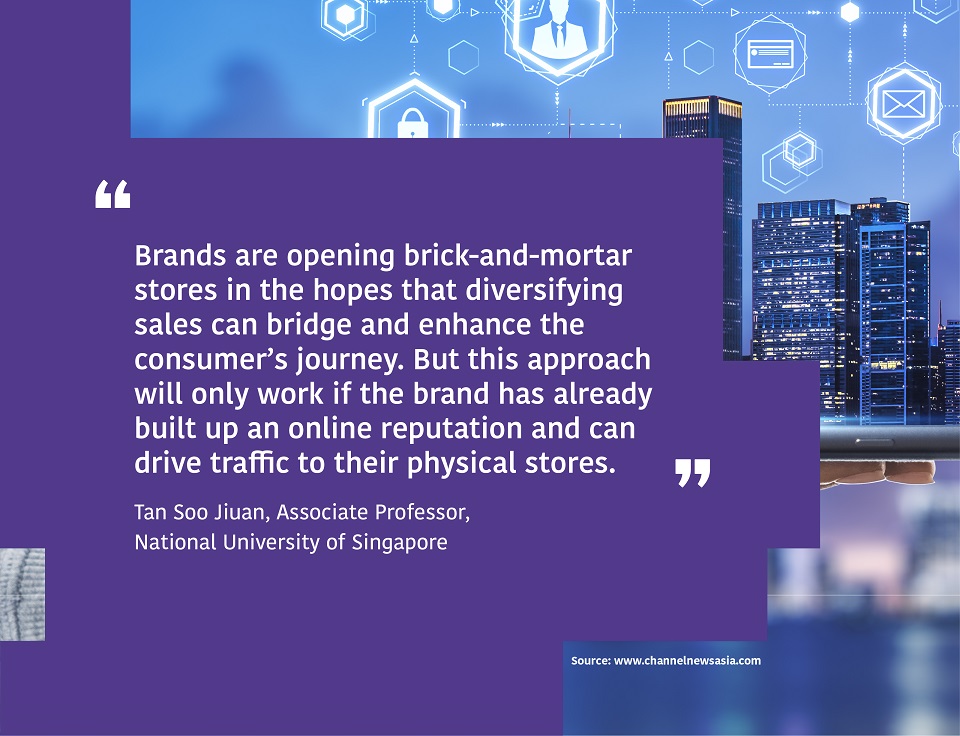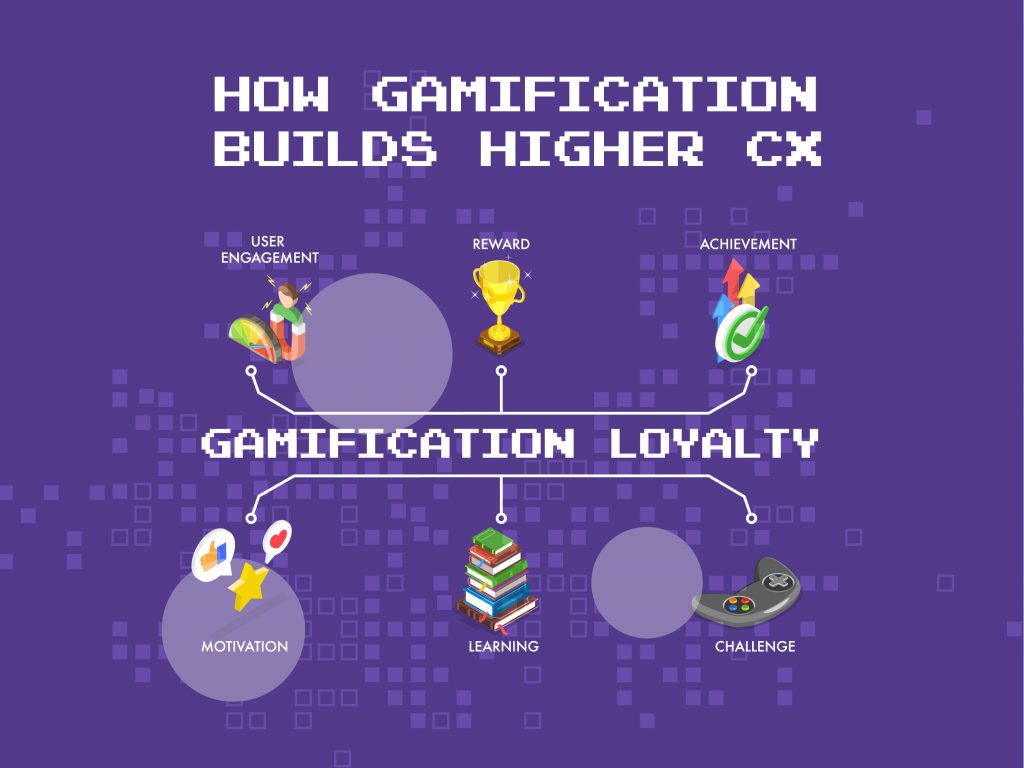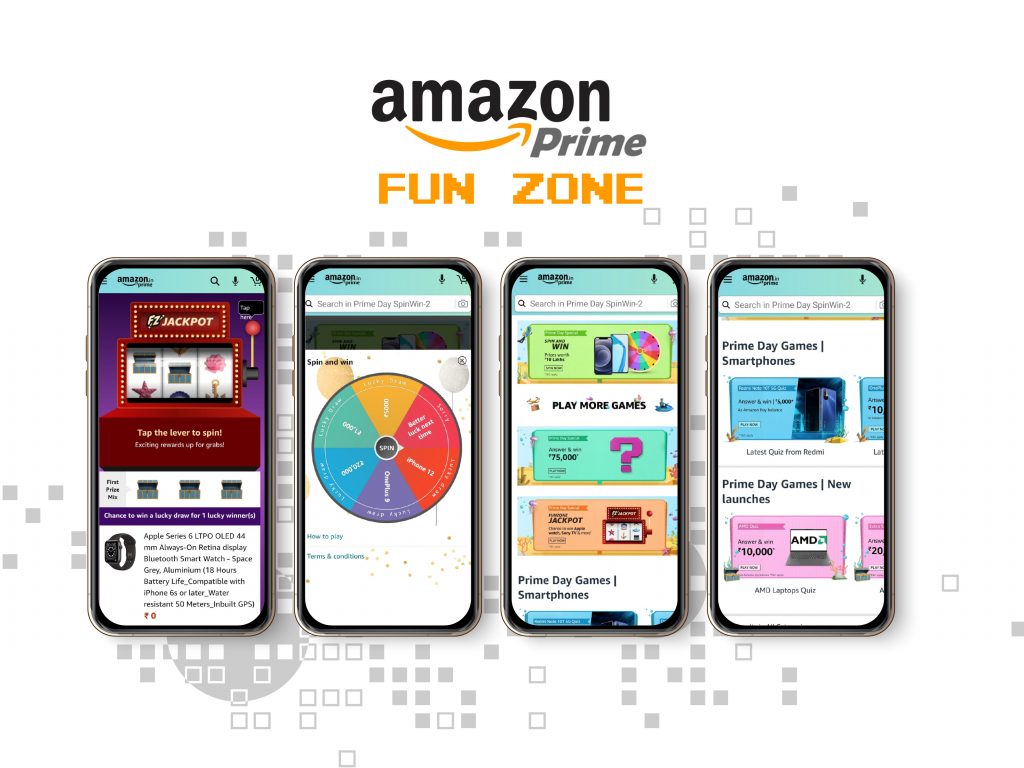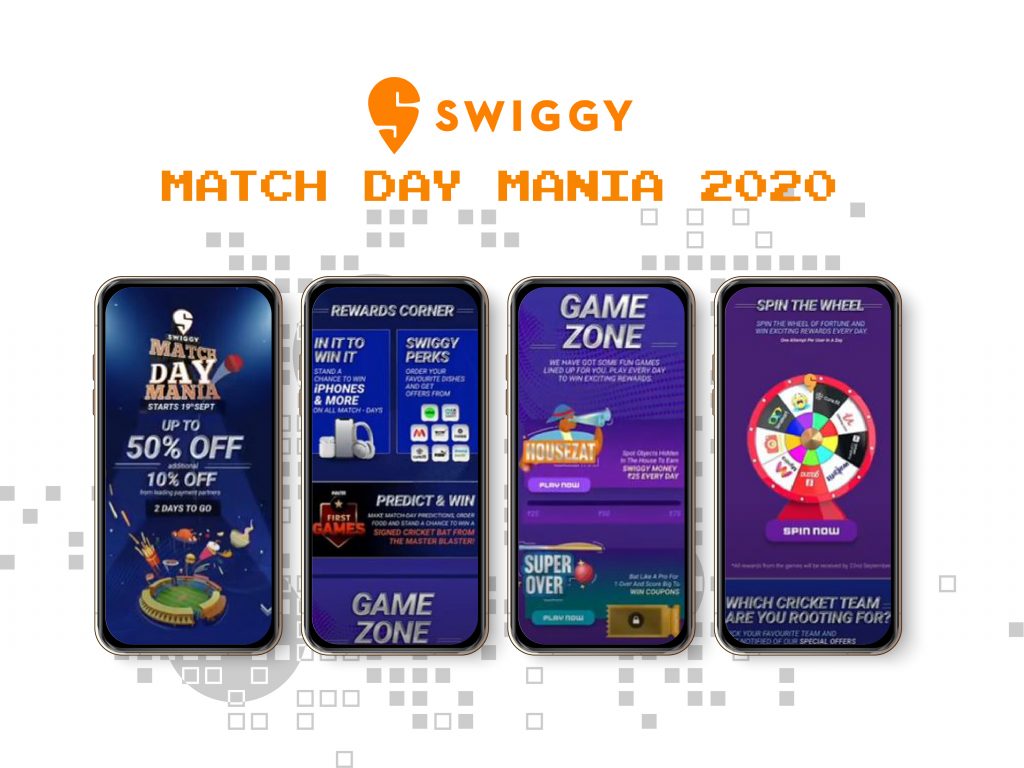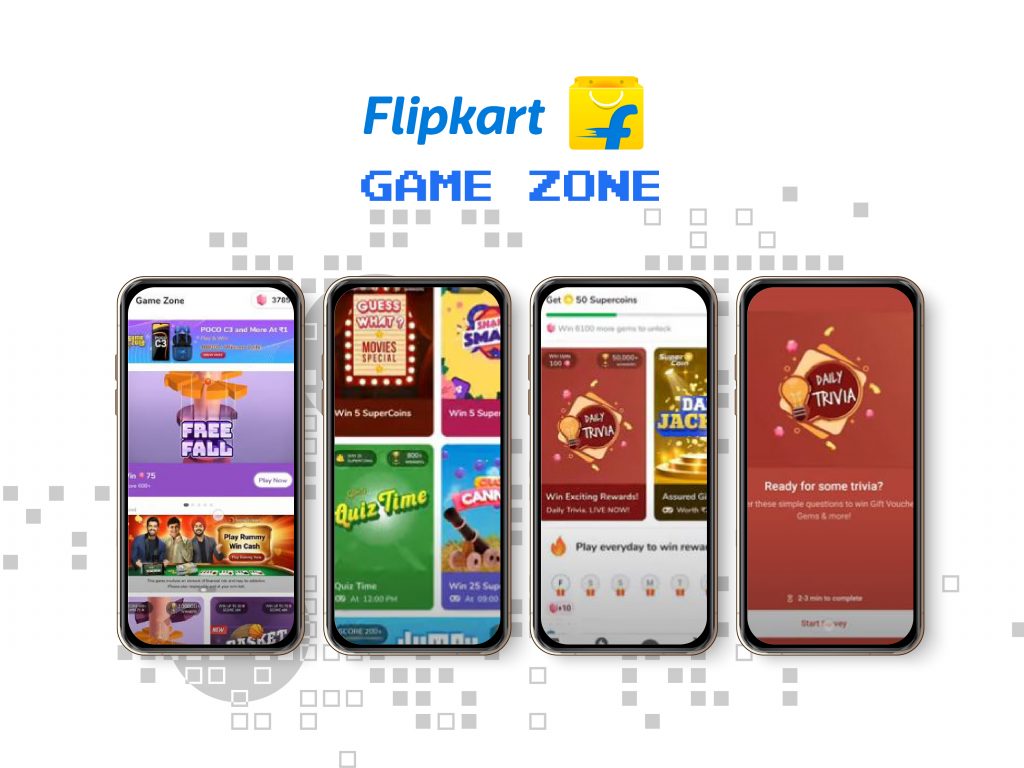Monthly Archives: August 2021
Top 5 Ecommerce Trends Pivoting To A Path-Breaking Digital Retail Strategy In Singapore
Over the past two decades, Singapore has become the hub for everything – entrepreneurial, financial, retail, fashion, cultural… you name it and they have slayed it! In this blog, we will highlight how some of the latest ecommerce trends in the country has led to the dawn of a digitized hub.
Singapore was not new to ecommerce. Even before the pandemic era, there was a major disruption in the retail market with booming ecommerce and closure of traditional shops in 2017. In fact, a survey by Visa in 2014 showed that Singaporeans are the top online shoppers in South East Asia. While 26% of them were shopping online once a week, almost 50% of the shoppers said that they were likely to do all their purchases online.
This was primarily due to the level of internet penetration in Singapore. The digital infrastructure in the country enabled to achieve up to 88%, with a big chunk of the population comfortable with digital payment modes. It was also observed that high preference for online shopping was due to convenience, cheaper prices and direct delivery. While globally ecommerce retail jumped, online sales doubled in Singapore, demonstrating that consumers slid into the retail shift with ease. This also showed evidence that retailers that had an online presence before survived the economic crisis caused by Covid.
And therefore the trend was already set. Ecommerce in Singapore was flourishing, and marketers now have to match the pace of Ecommerce growth by learning the dynamic trends of the landscape. Let’s take a look at what’s trending in online shopping from this boom that retailers can draw cue from:
1) Store in their hands
The younger population of the country emphasize on the higher smartphone penetration. Therefore ecommerce players should lean towards giving mobile-first experiences to achieve a wider online reach. For instance, creating a mobile-friendly webpage can result in better search engine and organic traffic.
Shopee, one of the leading ecommerce platforms started in Singapore in 2015. They later spread in other parts of South East Asia. The platform sells products across different categories. One of the notable features of the platforms is its seasonal and non-seasonal offers, as well as livestreaming with popular social media influencers to gain attention from the youth of the country. Shopee grabbed the mobile-first trend and focused on optimizing user experience on the mobile app, reaching out directly to the younger users in Singapore.
2) Millenial customer experience
A 2020 study by market research consultancy Blackbox and survey firm Toluna said that almost 40% of consumers were not satisfied with their shopping experience. This shows that ecommerce platforms have a lot of scope for improvement which needs to be done by prioritizing the consumer’s needs. Introducing a chatbot to understand the customer’s concerns, also point out that shoppers would prefer an interactive medium to answer their queries. Retailers can consider using Whatsapp as a medium to get closer to the customer and understand their shopping behavior better.
Carousell, one of the world’s largest secondhand marketplace where customers can buy or sell electronics, apparels, used cars, cleaning and repairing services. To achieve empathetic and well-informed customer support, the company has implemented AI automation and data to anticipate customer needs. Carousell’s chatbot is able to find relevant solutions to consumers’ queries rapidly and accurately.
3) Omnichannel retail for stores’ revival
Even pre pandemic Singapore witnessed many traditional brick-and-mortar stores being closed. Covid had accelerated these closures. Omnichannel retail can thus play a role to bring these stores back to life. Stores can act as a pick-up point for ‘click and collect’ models where customers can buy the goods online and collect them at a convenient location of their choice.
RedMart, an online supermarket arm of the Lazada group is one of the top grocery shopping platforms in Singapore. RedMart has introduced many innovative strategies to ensure a seamless experience for consumer. For example, the platform records and automatically saves delivery preferences and commonly purchased items, leading to convenient shopping for the customer and higher conversion rates for the retailer.
4) Love for local
Post Covid, consumers’ interest in local brands is rising. This is a peculiar trend given that several international brands are found in the country. A news report by Strait Times explains that this is because Singaporeans want to support the regional brands to revive them from the Covid aftermath. This trend shows that a huge opportunity lies in partnering with such brands and attracting consumers for the right reasons.
Zalora, a fashion e-retailer that is taking over the street fashion space with its top international and local brands. Not only does Zalora partnered with several local brands through its marketplace where independent merchants can sell their products, the brand is also known for its blogs that contain guides and tips on fashion, beauty and lifestyle.
5) Go Experiential:
While consumers are engrossed in the online shopping world, retailers have come up with compelling reasons to bring customers back to stores through experiential retail. Experiential retail basically focusses on creating an immersive experiences for customers, prioritizing engagement over sales. Upcoming AI and tech solutions like augmented reality, interactive digital mirrors, do-it-yourself sections which allows customers to personalize their desired product would go a long way in building customer experience and eventually a long lasting brand relationship.
Bath & Body Works is an American bath shop brand that operates as part of the Valiram Group in Singapore. Last year, when self-care was gaining importance during the pandemic, Bath & Body Works swooped into the online space in 2020. Using the capabilities of Capillary’s Anywhere Commerce+ tool, the brand aced their ecommerce platform scalability and stability, managing a large jump in sales on the go live day of their website. Besides scalability, the brand also prioritized seamless consumer journey experience and enabled smart search merchandising on the website to resonate with their digital customers.
Digital dreams of a smart city
Thanks to the nudge from the pandemic, Singapore hopes to become a global ecommerce hub. In an interview with CNBC, Ben King (country director at Google Singapore) pointed out at the number of initiatives taken by the Singapore government to cultivate a conducive landscape for ecommerce and digital growth. While early in 2020 Enterprise Singapore announced an Ecommerce Booster Package, the government has now partnered with Google under the Skills Ignition SG initiative to train citizens who are looking for jobs in the digital industry. As Singapore is on the path to build a smart society, the country is gradually moving towards a progressive and increasingly digital economy.
Another bizarre possibility we might see in Singaporean ecommerce, is new found importance of the physical stores. For example, Singapore’s popular fashion e-retailer Love, Bonito has opened its third showroom in Singapore. In a Channel News Asia article, NUS Business School’s Associate Professor Tan Soo Jiuan says, “Brands are opening brick-and-mortar stores in the hopes that diversifying sales can bridge and enhance the consumer’s journey. But this approach will only work if the brand has already built up an online reputation and can drive traffic to their physical stores.”
With ample space for innovation in both online and offline channels, there are many ways in which players can differentiate with customer experience and business strategies. Marketers must not forget that this differentiation is the key to shine in the vast digital landscape of Singapore.
Capillary Technologies recognized in Forrester’s ‘Now Tech: Promotions And Offer Management Providers, Q3 2021’
Gamification Strategy In Loyalty Programs – Are We There Yet in India?
Moving over earn and burn, personalization has now become hygiene. In a world where dynamic consumer behavior has become the game changer for brands to set their marketing strategy, gamification might just be the secret ingredient that Indian brands should watch out for next.
Coined in 2003, gamification is in its full form these days. While in some countries, the concept of gamification is as amateur as it can be, in the last few years, gamification has moved beyond badges, challenges and leaderboards. Innovation has been done in this space by some of the leading brands like Nike’s running app, Starbucks, Duolingo to name a few. Most brands, however, are still oblivious of its engagement power. This scenario is more evident in the Indian subcontinent. Is it because of the lack of interest or are marketers unable to foresee the true potential of a gamification strategy in loyalty program? Or was it Google Play Store’s restricted guidelines on gamified loyalty programs in India last year that refrained brands from indulging in gamification? To some extent, yes.
If we go back to basics, winning and losing are part of a game. Could that be the reason why brands withdraw from the gamification strategy? As only a handful of members would win. Would this lead to a disappointing factor among their existing loyal members? The answer is ‘No’. In fact, lack of engagement might lead otherwise. Indeed, all games come to an end but one cannot debate the irresistible engagement and excitement that a game can build in a loyalty program. A loyalty program needs to execute the gamification strategy to keep their existing loyalty program engaging with customers in a fun and interactive way.
3 ways gamification strategy in loyalty programs is sure to hit the jackpot
It is disheartening to learn that 54% loyalty memberships are inactive. Knowing what a customer really wants from a brand is an ever evolving thesis in itself. A gamification strategy would make a difference when the games integrated with a loyalty program can engage their customers like no one’s looking. It is thus vital for brands to segment their customer groups, analyze their shopping behavior and draw clear insights on how gamification loyalty will hit the bull’s eye for their loyal consumers in the longer run. Gamification in loyalty programs however, instantly meets two of the most crucial and primary objectives of any brand. These are stated below:
1. Turning on active mode for inactive customers: Of all the customer segments, managing the inactive group is the most challenging one. While it also depends on what product or service a brand is selling but having no customer interaction for a long period might result in a dropout soon, if not addressed timely. Given that 65% of a company’s revenue comes from its existing customer groups, it’s hard to let go off customers based on inactivity. At a time like this, gamification in loyalty programs disables inactivity and brings customers a step closer to interact with the brands through introducing gamification features like Spin the wheel, Prize machines, Quizzes, etc. Designing an exclusive gamified loyalty program would largely depend on what your customer aspirations and motivations are. At Capillary, we dive into data-driven insights to create the right gamification strategy for your loyalty programs. Learn all about gamification in loyalty programs here.
2. Building customer engagement: All said and done, games are an excellent mode of customer engagement. In fact, NY best-selling author Charles Duhigg aptly shares how everyday small wins lead to a contended life. In his blog on the Economics of Small Wins, he shares, “Small wins fuel transformative changes by leveraging tiny advantages into patterns that convince people that bigger achievements are within reach.” When you consistently build a relationship with your customer, you would notice the spike in the brand ROI as part of the repeat purchase pattern indicated by your customers result in increased website traffic, frequent revisits and higher customer engagement. And consistent and successful customer engagement can drive 55% higher share of wallet.
3. Swinging up ROI: With a surge in customer engagement and the right gamification strategy in place, a business’ ROI is bound to be positively impacted from a well-laid out gamified loyalty program. Clothing brand Moosejaw noticed a whopping 560% ROI after incorporating gamification strategy.
3 super brands leading the race with gamified loyalty programs in India
After having relaxed its Play Store policies early this year, Google too aligned with Indian conglomerates and startups for the need to build customer engagement through gamification more than ever before. In India, brands are still opening up to the notion of gamification but following are some of the players who have brilliantly executed this strategy in their loyalty programs.
Amazon Prime
A subscription-based model with an upfront one-time annual fee offers countless benefits (at preferential pricing) to its members. This loyalty program need no introduction. But if you think that offering rewards is the only pull for its loyal customer base. Think again. Login to your Amazon Pay App and unveil some of the most exciting games that members can play, earn, redeem and play gain. They also tie up with new product launches and build exclusive games around such events. If you are someone who has already played some of these games, you would agree that gamification puts you in a recurring loop for at least 15-30 days taking customer engagement to an altogether new level.
Swiggy
It comes as no surprise when cricket and India are teamed together for any marketing campaign. Swiggy’s Match Day Mania in 2020 was one such loyalty program with gamification strategy that was centered around nation’s most loved game and received highest traction during the time it was run. Swiggy ran a Cricket Quiz Flow option that let users guess the correct answer and win perks simultaneously. This was followed by #InItToWinIt – a raffle campaign aimed towards ordering from Swiggy and moving closer to win exciting gifts. Valid on weekends, this was an interesting way to engage the audience given the pandemic had already created a lull and reluctance to step outside to dine.
Besides seasonal games, currently, Swiggy has a roulette-based game for its subscribed members that allows them to pull the lever and things roll up as rewards after availing a certain number of food deliveries the subscription.
Flipkart
Ecommerce player Flipkart too introduced SuperCoins zone that allows its members to play different games and earn rewards simultaneously. A user earn coins on every purchase they make and earn rewards simultaneously. The brand also has an exclusive Gamezone that enlists some of the most engaging games keeping in sync the Indian consumer behavior and motivations. Recently, Flipkart introduced a daily trivia Bollywood quiz under its games section in the App comprising five questions to be answered before midnight. Many prizes and SuperCoins are up for grabs thereby increasing the probability of winning for its subscribed members.
A gamified future…
An industry that is valued at $12 billion and is touted to grow enormously, gamification market is expected to hit $31 billion by 2025. These tap and play games in loyalty programs have enabled consumers to feel positive given the current unstableness hovering around the world. Consumers feel involved with a brand, motivated and look towards a sense of achievement when they win badges or are recognized on social media platforms. Given the motivational level it creates, consumers are drawn to visit the App, store, website or any other platform again thereby creating higher level of gratification which in turn works favorably towards the brand.
Indian brands like Swiggy, Zomato, Amazon have leapfrogged and are reaping its benefits. It’s about time that gamification strategy in loyalty programs takes the lead in India and brands incorporate this strategy for achieving a higher engagement.
